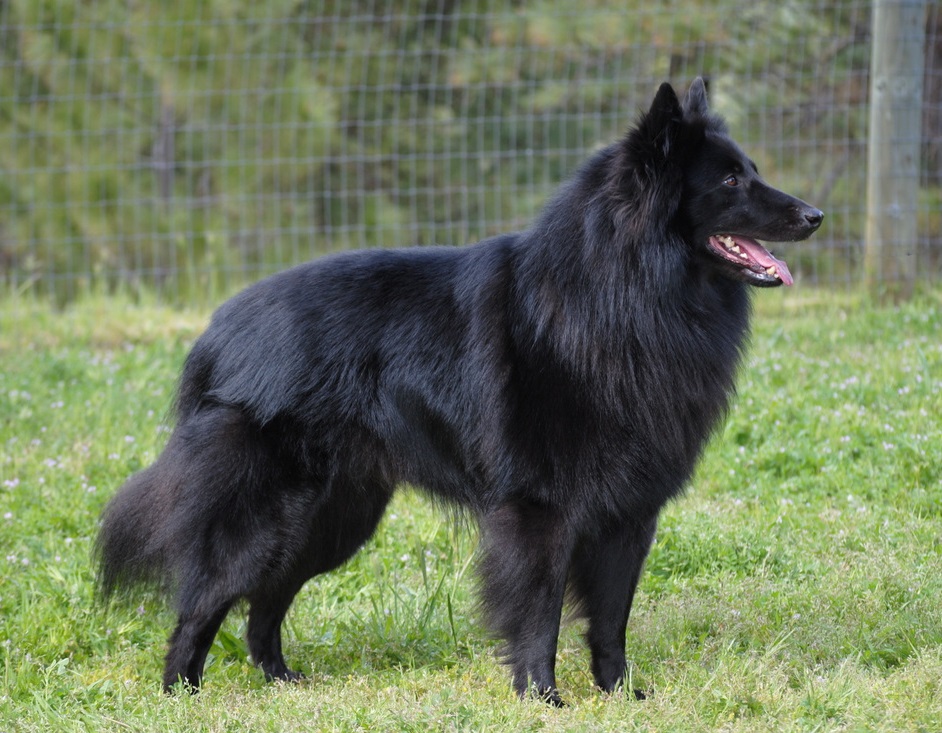
Belgian Sheepdog

Navigate through the tabs
Navigate through the tabs below to view the breed's info of your interest.
The breed's info is divided in four sections; namely:
the breed's history ,
the breed's main stats ,
the dog's potential health issues
and finally, how the breed scored in 26 different categories.
All the above information should give you a respectively good overview for the dog of your interest.
Dog Breed's Main Info
The Breed's History:
The Belgian Sheepdog is one of four varieties of shepherd dogs that were developed in Belgium in the late 1800s. The four varieties are the Malinois (fawn-mahogany, short coat with black mask), Tervuren (fawn-mahogany, long coat with black mask) the Laekenois (fawn, rough coat), and the Belgian Sheepdog, or Groenendael (black, long coat).
The American Kennel Club (AKC) recognizes all but the Laekenois as separate breeds in the U.S., while the United Kennel Club recognizes all four types as one.
The Club du Chien de Berger Belge (Belgian Shepherd Dog Club) was formed in September 1891 to determine which of the many different types of dogs was representative only of the shepherd dogs developed in Belgium. In November of that same year, breeders and fanciers met on the outskirts of Brussels to examine shepherd dogs from that area.
After much deliberation, veterinary professor Adolphe Reul and a panel of judges concluded that the native shepherd dog of that province were square, medium-size dogs with well-set triangular ears and very dark brown eyes and differed only in the texture, color, and length of hair. Subsequent examinations of dogs in other Belgian provinces resulted in similar findings.
The black-coated Belgian Sheepdog was developed primarily by breeder Nicolas Rose, whose kennel dates to 1893. The breed takes its European name from Rose's estate, Chateau Groenendael, outside Brussels. He purchased the breed's foundation dogs, Picard d'Uccle and Petite, and their offspring are the ancestors of today's Belgian Sheepdogs.
The dogs were immediately popular for their versatility and were used as police dogs in Paris and New York in the early 1900s. In Belgium, customs officers patrolled the border with them.
During World War I, they carried messages and pulled ambulance and machine gun carts. Their popularity in the United States increased after the war, and the Belgian Sheepdog Club of America was formed in 1919.
The Depression era took a toll on their numbers, but they served as war dogs in World War II, and interest in them has gradually increased since that time.
Today they excel in canine performance sports and rank 122nd among the 155 breeds and varieties recognized by the American Kennel Club.
Country of Origin:
Belgium
Breed Group:
Herding
Height:
1 foot, 10 inch. to 2 feet, 2 inch. (55,88 to 66,04 cm)
Weight:
60 to 75 pounds (27,21 to 34,02 Kg)
Life Span:
10 to 12 years
Potential Health Issues:
Epilepsy,
Elbow Dysplasia,
Progressive Retinal Atrophy (PRA),
Cancer,
Anesthesia Sensitivity,
Hypothyroidism,
Hip Dysplasia
Adaptability
Apartment Living:
First Time Owners:
Sensitivity:
Being Alone:
Cold Weather:
Hot Weather:
Friendliness
Affection With Family:
With Kids:
With Dogs:
With Strangers:
Health and Grooming
Shedding:
Drooling:
Easy To Groom:
Overall Health:
Weight Gain Potential:
Size:
Training
Easiness:
Intelligence:
Mouthiness:
Prey Drive:
Barking or Howling:
Wanderlust:
Need For Exercise
Energy Level:
Intensity:
Exercise Needs:
Playfulness:
Our Mobile Application
Check out Our Mobile Application "Dog Breeds Central"
